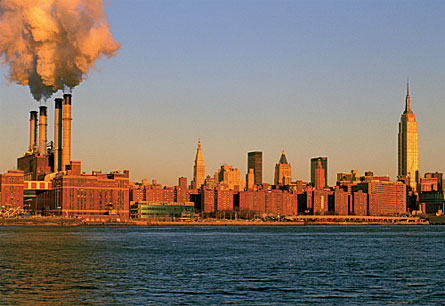
In the United States, only about one-eighth of the fuel people burn is converted into useful work. For a variety of reasons — losses during transmission of electrical power, simple laws of thermodynamics, friction and other inefficiencies — the other seven-eighths of the energy goes unused.
The statistics are slightly better for power plants that use fossil fuels: Only two-thirds of the energy locked in the fuel ends up as waste heat, says Thomas R. Casten, an economist and chairman of Recycled Energy Development in Westmont, Ill. In many parts of the world, and especially in developed nations, power plants are typically located far from urban areas. So, he and colleague Phil Schewe of the American Institute of Physics note in the January-February American Scientist that heat is simply dumped into the environment: While electricity can easily be transmitted long distances (albeit with some losses), heat — at least in amounts that can be used to generate power — doesn’t travel very efficiently.
If power plants weren’t so distant from their customers, Casten suggests, some of that waste heat could be, literally, put to work. New York City provides a fine example of such recycled energy: Consolidated Edison delivers heat to thousands of buildings in Manhattan via the largest commercial steam system in the world.
Similar systems are more common in Europe: In Gotëborg, Sweden, heat is distributed to more than a quarter-million homes from a waste-incineration plant via hot water through buried, insulated pipes — a city-sized version of the baseboard heating used in many individual homes. In Denmark, more than 50 percent of the energy used is recycled.
Many industrial processes could be sources of recycled energy, says Casten. While topping buildings with white roofs and using photovoltaic cells to generate electricity are good ideas, those techniques don’t yield the same results as recycling energy, Casten argues. To generate the same amount of power as the steel plant in Indiana does, he claims, you’d need to string together every one of the solar cells that are produced in the United States over three years.
“Recycling energy is the best-kept secret around,” he notes.





